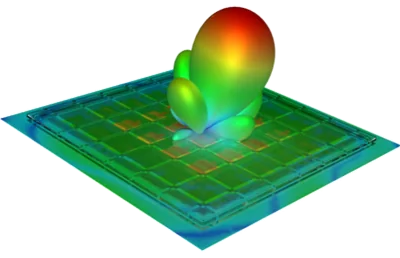Blog: Automation in Antenna Design with PyAEDT and Ansys Electronics Desktop

How is PyAEDT revolutionizing antenna design and in particular what is the impact of multiphysics simulation, automation and optimization on phased array antennas? This blog gives a brief overview of the benefits of integrating this tool into your design process.

PyAEDT is a Python library developed by Ansys to extend and consolidate the functionalities of Electronics Desktop scripting. It allows engineers to automate workflows, parameterize designs, and perform complex simulations without the need for manual intervention. Unlike traditional scripting methods in AEDT, which rely on IronPython, VBA, or JavaScript, PyAEDT leverages CPython, providing access to a vast ecosystem of external libraries such as NumPy, SciPy, and machine learning frameworks.
The key advantage of PyAEDT is its ability to operate outside the 3D graphical environment of AEDT. Engineers can write, edit, and execute scripts in a coding environment while simultaneously running simulations in AEDT. This separation of environments enhances flexibility, scalability, and reusability of code.
Automation is transforming the way engineers approach design and simulation. Here are some of the key benefits:

PyAEDT is used to create an antenna array
Before the advent of PyAEDT, engineers relied on traditional scripting methods within AEDT. While these methods were useful, they had several limitations:
PyAEDT addresses these limitations by providing a clean, reusable, and extensible framework that works with CPython and integrates seamlessly with AEDT.
PyAEDT represents a significant leap forward in the automation of antenna design and simulation. By leveraging the power of Python and Ansys Electronics Desktop, engineers can streamline workflows, optimize designs, and integrate multi-physics simulations with ease. Whether you’re designing phased array antennas or exploring AI-driven optimization, PyAEDT offers a robust and flexible framework to meet your needs.
As the demand for faster, more efficient design processes continues to grow, tools like PyAEDT will play an increasingly important role in shaping the future of electronics engineering. So, if you haven’t already, it’s time to dive into PyAEDT and unlock its full potential for your projects.
Ready to get started? Visit our dedicated webpage to explore simulation solutions for antenna design and placement.
